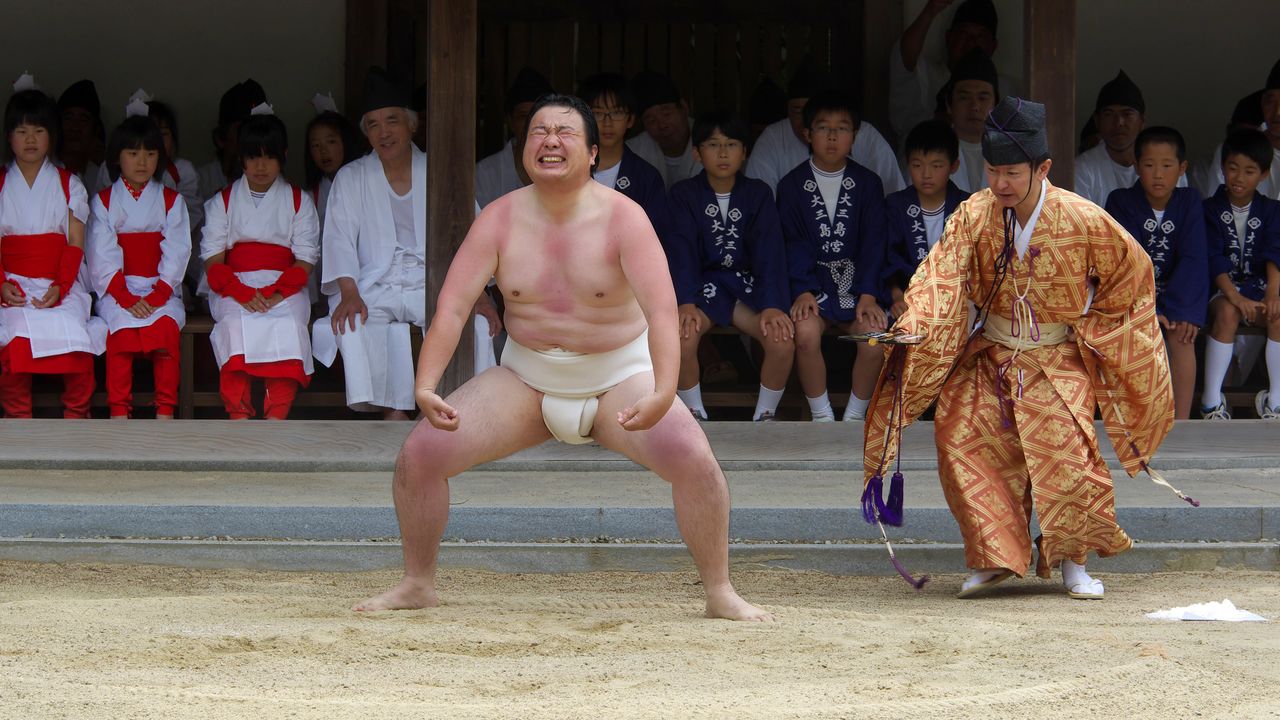
Sumō for the “Kami”: Three Japanese Festivals Preserving the Sport’s Ritual Roots
Guideto Japan
Culture- English
- 日本語
- 简体字
- 繁體字
- Français
- Español
- العربية
- Русский
A National Sport Born of Sacred Rites
Sumō is Japan’s national sport, but its origins are ancient. Mention can be found in national myths recorded in Kojiki—a compilation of creation myths completed in 712—about kami divinities wrestling to test their strength. Nihon shoki of 720 records how a warrior named Nomi no Sukune, considered the original sumō wrestler, won a wrestling match for the entertainment of the legendary eleventh emperor of Japan Suinin. Later, tenranzumō, or bouts before the emperor, became a rite held at the imperial court in the Nara (710–794) and Heian (794–185) periods. These were not mere entertainment but considered harbingers of good or bad harvests based on the victor.
The shiko stomping performance held when a wrestler first steps into the raised ring has its roots in a Heian period rite called henbai. Before the emperor or court nobility would go out, a diviner would stomp the earth and chant an incantation to drive out any evil spirits lurking in the soil. The shiko, where a wrestler lifts his leg high into the air, has lost the deeper significance of the henbai, but still conveys that the ring is a sacred place suitable for the kami to descend.
At the end of the Heian period, the rise of the warrior class brought a more martial flavor to the ritual. Later, as peace came in the Edo period (1603–1868) it became popular as a spectacle. Sumō tournaments sprang up around the country as ways to raise money for temple and shrine restoration, and these led to the grand ōzumō tournaments of today.
Even today, there are rites held at the ōzumō and local regional sumō contests called dohyō matsuri where a hole in the center of the earthen ring is filled with offerings like sake, rice, konbu kelp, dried squid strips, and kaya (Japanese nutmeg). These rites invoke a prayer for a safe contest, as well as peace for the nation and a good harvest. Sumō is clearly not just a national sport but also retains elements of Shintō ritual. Here, we offer a look at three grand sumō matsuri which maintain a strong sense of the sport’s Shintō roots.
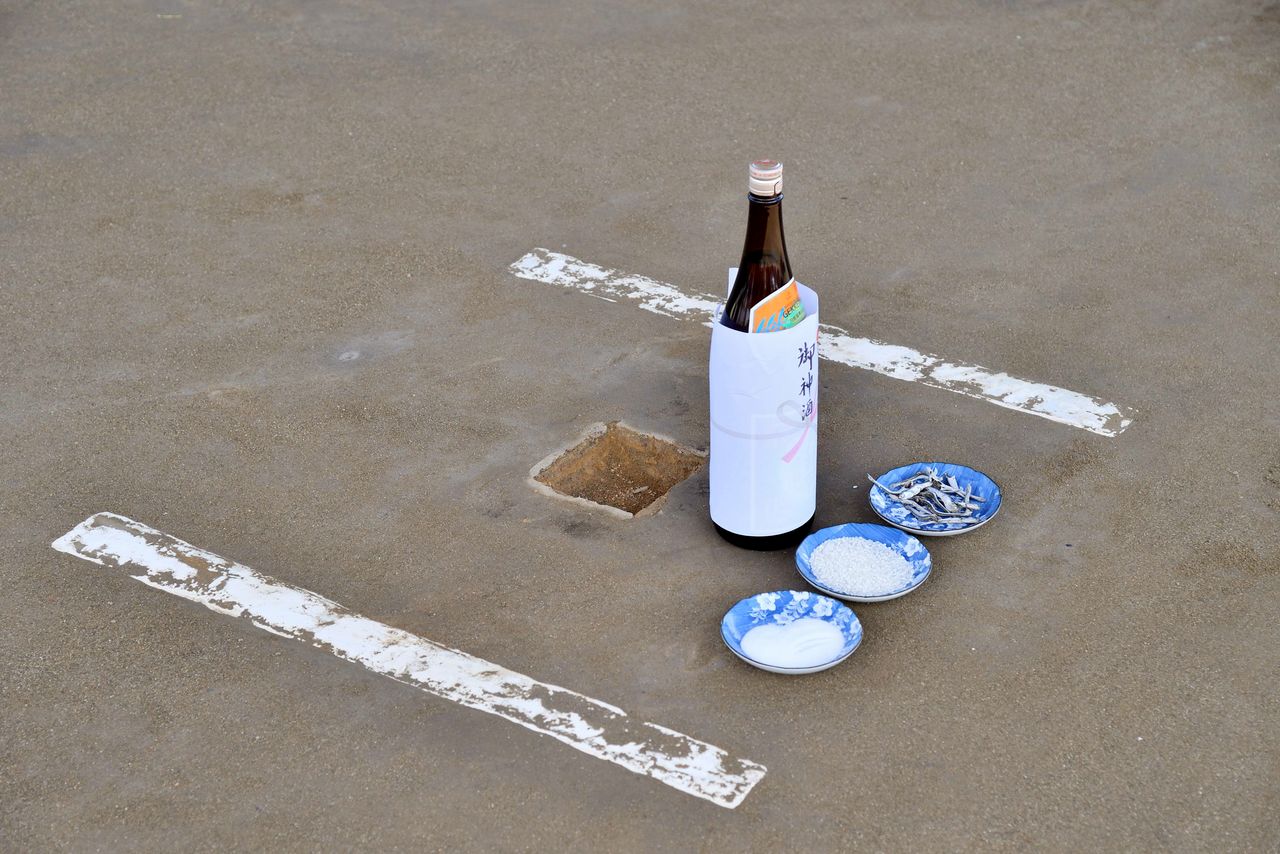
When the autumn ōzumō season approaches at the Takahama Hachiman Shrine in Nagasaki, priests offer up sake, washed rice, salt, and meat of the flying fish at the ritual ring in an invitation to the kami. (© Haga Library)
Ōyamazumi Shrine Otauesai/Nukihosai
(Fifth day of fifth month and ninth day of ninth month on the traditional calendar, Imabari, Aichi Prefecture)
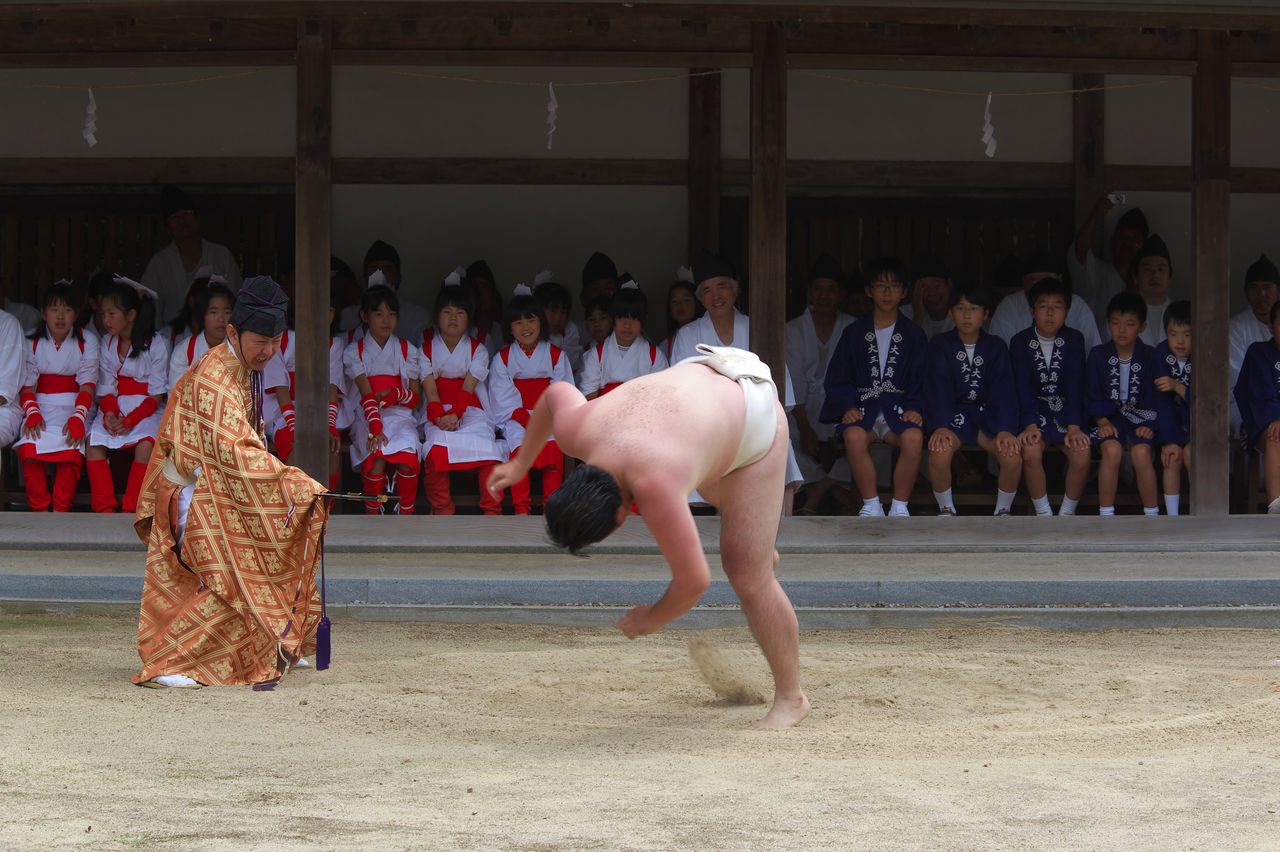
A hulking sumō wrestler is tossed about by an unseen opponent. (© Haga Library)
Ōyamazumi Shrine on Ōmi island in the Seto Inland Sea carries on a unique tradition of hitorizumō or “solo sumō.” The roots remain unclear, but it is an ancient rite first recorded in 1364. It is held twice a year, at the early summer rice planting festival, or Otauesai, and early autumn rice harvest, or Nukihosai.
A single wrestler, called ichirikizan, steps into the ring. There, he wrestles with an unseen opponent. He is pushed and pushes back, then is thrown down. The sight is a humorous one, but his striving with the spirit of rice is a harbinger of a good harvest.
The match has three rounds. The first is a clear win for the spirit, with the wrestler forced out of the ring. The second sees the wrestler stick to the ring and eke out victory. The third becomes a heated match in true ōzumō fashion, ending with a series of overhand throws from the spirit that send the wrestler flying. The spirit thus takes victory.
After the ritual sumō is over, girls of the island head to the sacred fields, or saiden, to plant rice in the spring or harvest it in the fall. They offer thanks to the rice kami, now in high spirits after its victory and so promising a bountiful harvest.
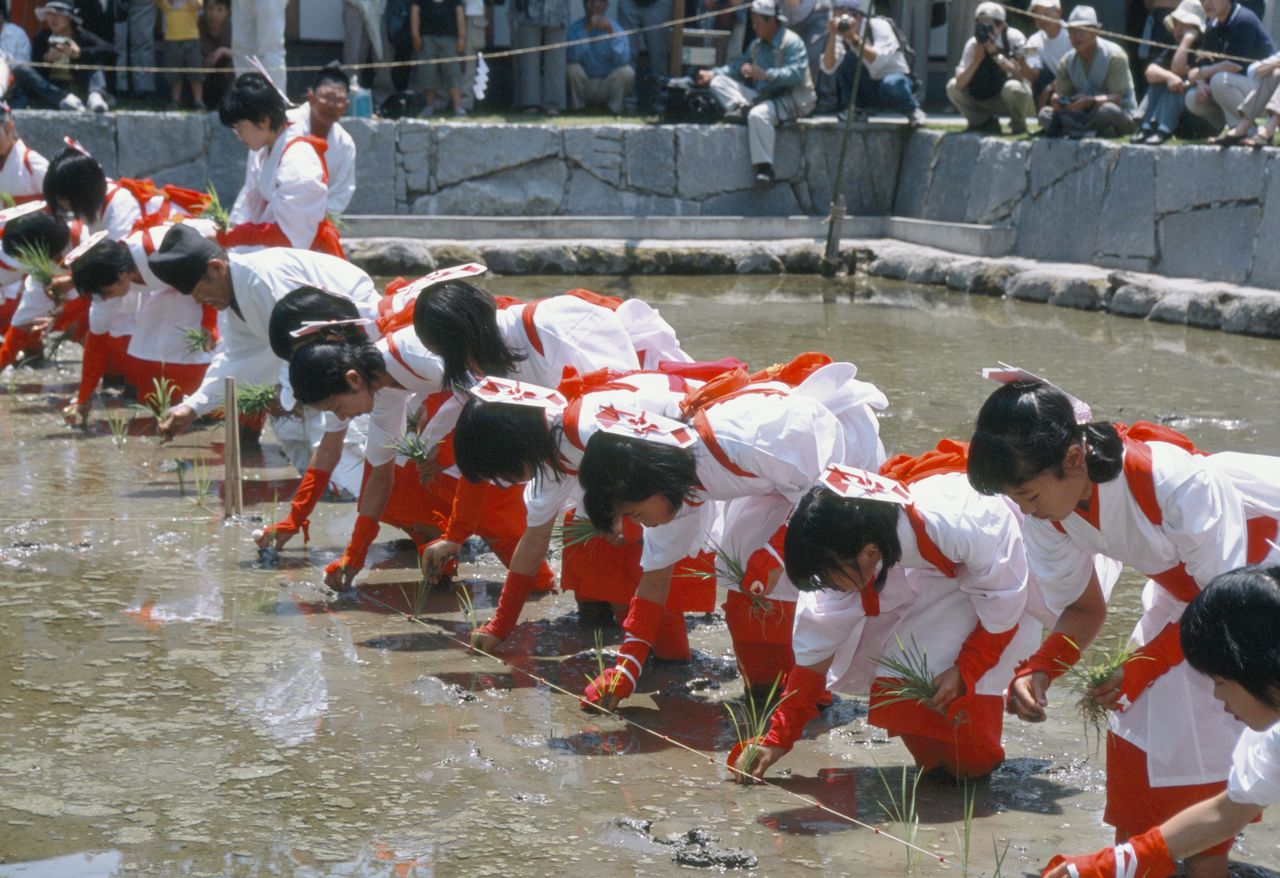
At the rice planting Otauesai ritual, 16 saotome, or rice planting maidens, wear red and white paper noshi charms on their heads as they plant rice seedlings. (© Haga Library)
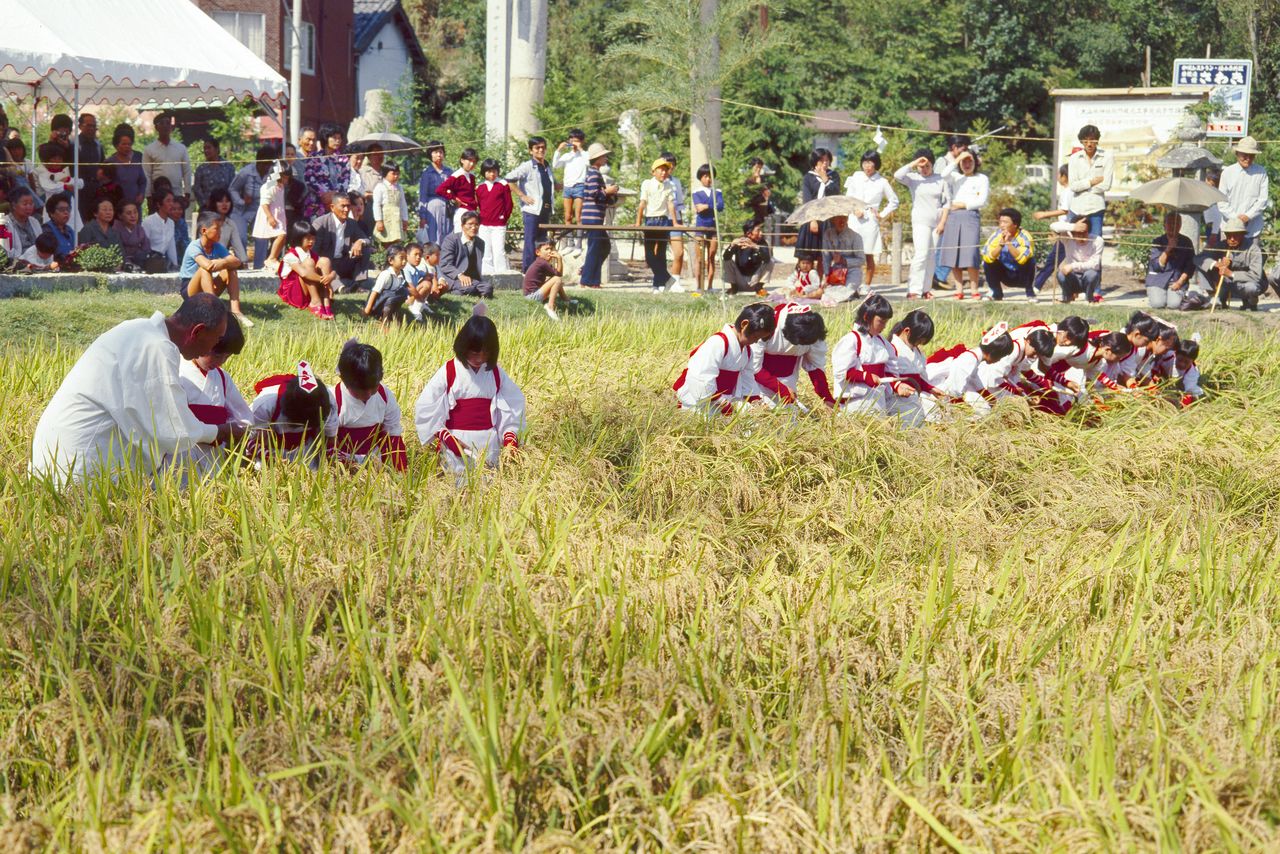
At the Nukihosai, nukiho otome maidens wearing the same costume harvest and offer up the first heads of rice to the kami. (© Haga Library)
Takahama Hachiman Shrine Shūki Taisai
(September 23, Nagasaki, Nagasaki Prefecture)
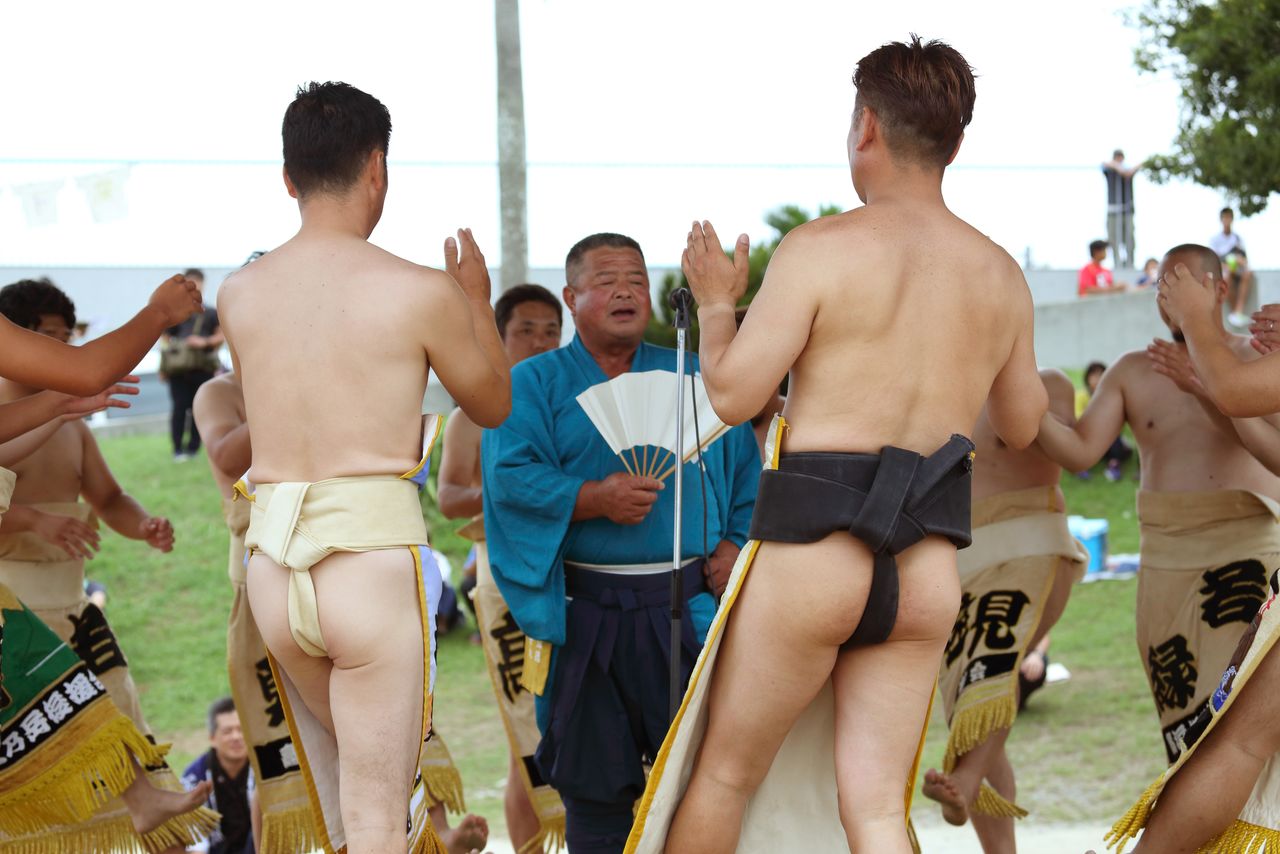
Wrestlers dance in a circle to sumōjinku songs filled with hometown pride. (© Haga Library)
The district of Takahama stands at the tip of the Nagasaki peninsula and has earned a reputation as a “sumō town” where most of the men participate and even have wrestler names. The autumn festival, or Shūki Taisai, at Takahama Hachiman Shrine is known as Takahama Kunchi. It is a sumō-centric ritual that offers up prayers for good grain harvests and safety for families.
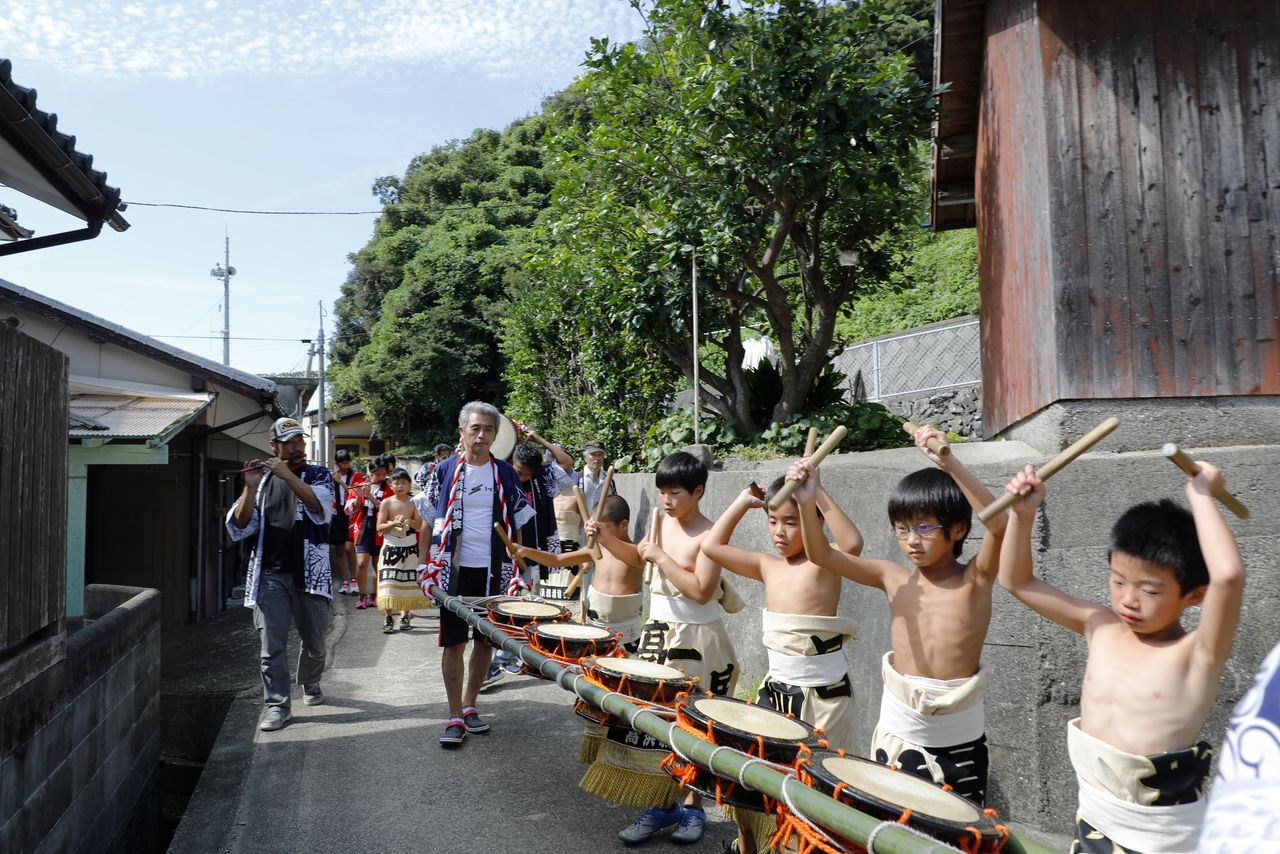
Children in sumō mawashi belts walking in line playing taiko drums attached to green bamboo poles. In northern Kyūshū, they call the autumn festival kunchi. (© Haga Library)
The day before the festival, the sound of furedaiko drumming fills the air and announces the upcoming event. The drums are played by children dressed in decorative keshōmawashi sumō belts. Residents look on with smiles on their faces and hand out gifts.
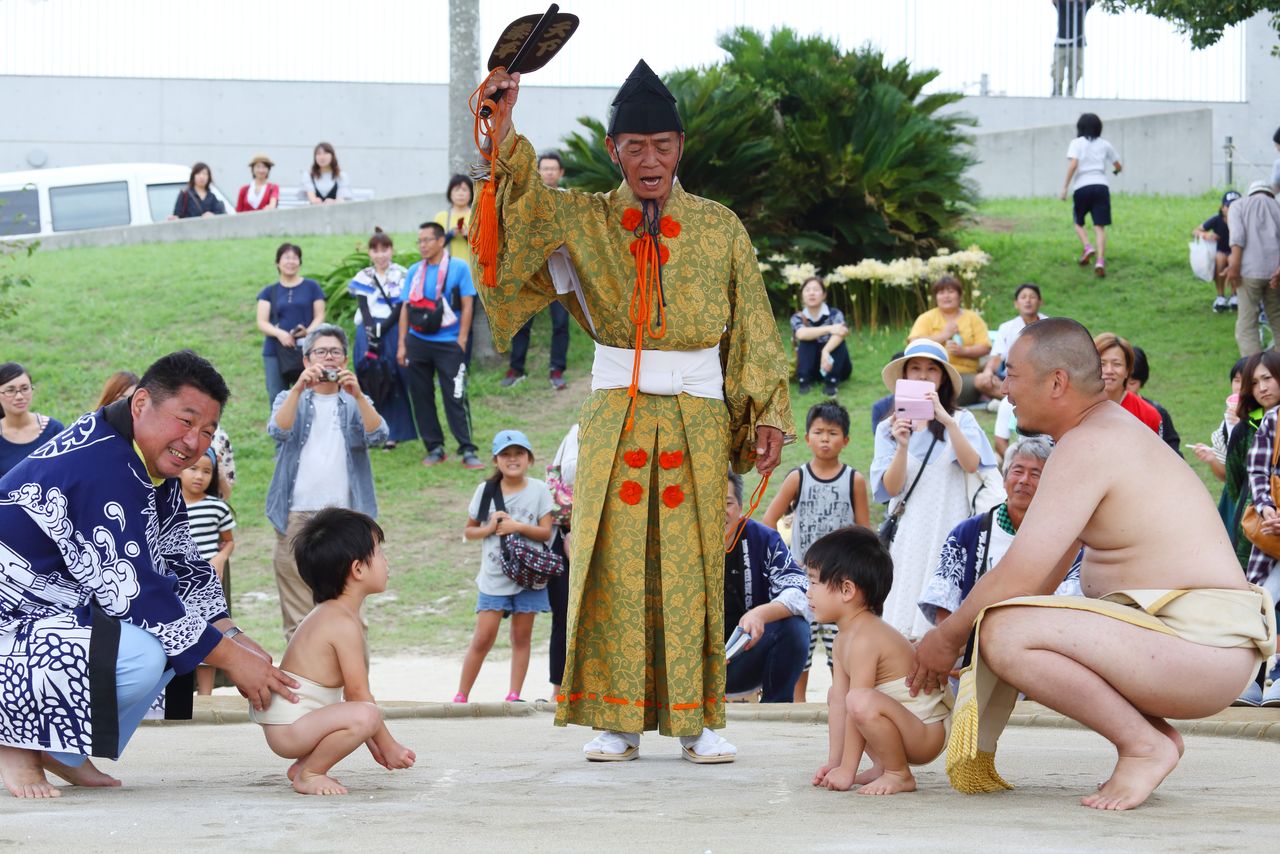
Families cheer on the children’s matches. (© Haga Library)
The morning of the event starts with a parade of mikoshi portable shrines, with the sumō bouts coming after noon. Whole families cheer on the 33-ban Hōnōzumō ritual matches of elementary school-aged and younger children, and everyone enjoys the referees’ adlibbed calling. After that, the youth wrestlers take the ring for the sumōodori dance, accompanied by traditional songs. The singer standing at the center of the circle sings in a high pitch, while the dancing wrestlers join in with deeper voices, filling the site with a solemn atmosphere.
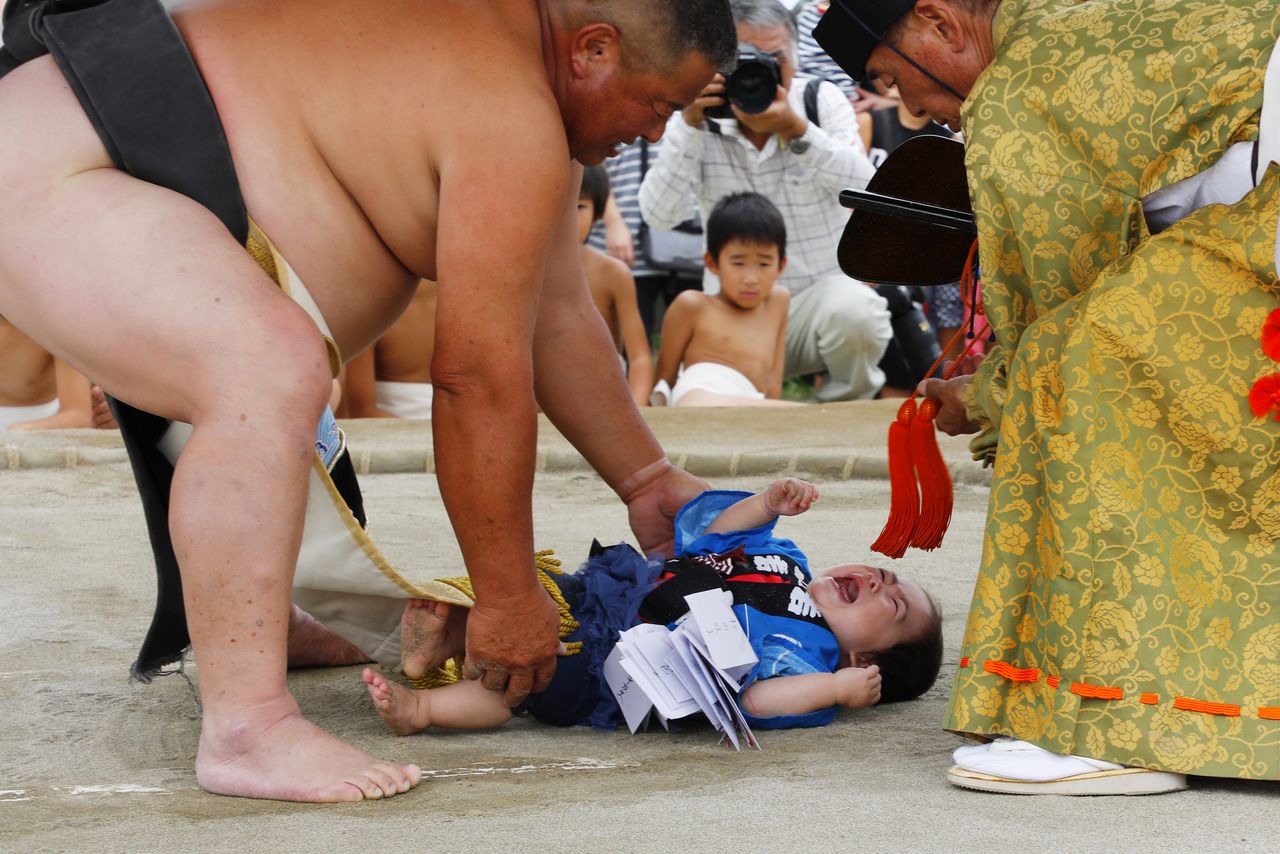
Toddlers under one year take the ring covered in gift envelopes filled with money. (© Haga Library)
The real star of the event is the nakizumō, or “crying sumō” event, where babies enter the ring. A wrestler stomps the shiko chanting “Dosukoi!” to raise a healthy cry from the infant opponent. A loud cry is believed to encourage future health.
The final event is warizumō, with wrestlers of the top three ranks of ōzeki, sekiwake, and komusubi from both east and west facing off. These earnest matches between mighty men create a grand spectacle.
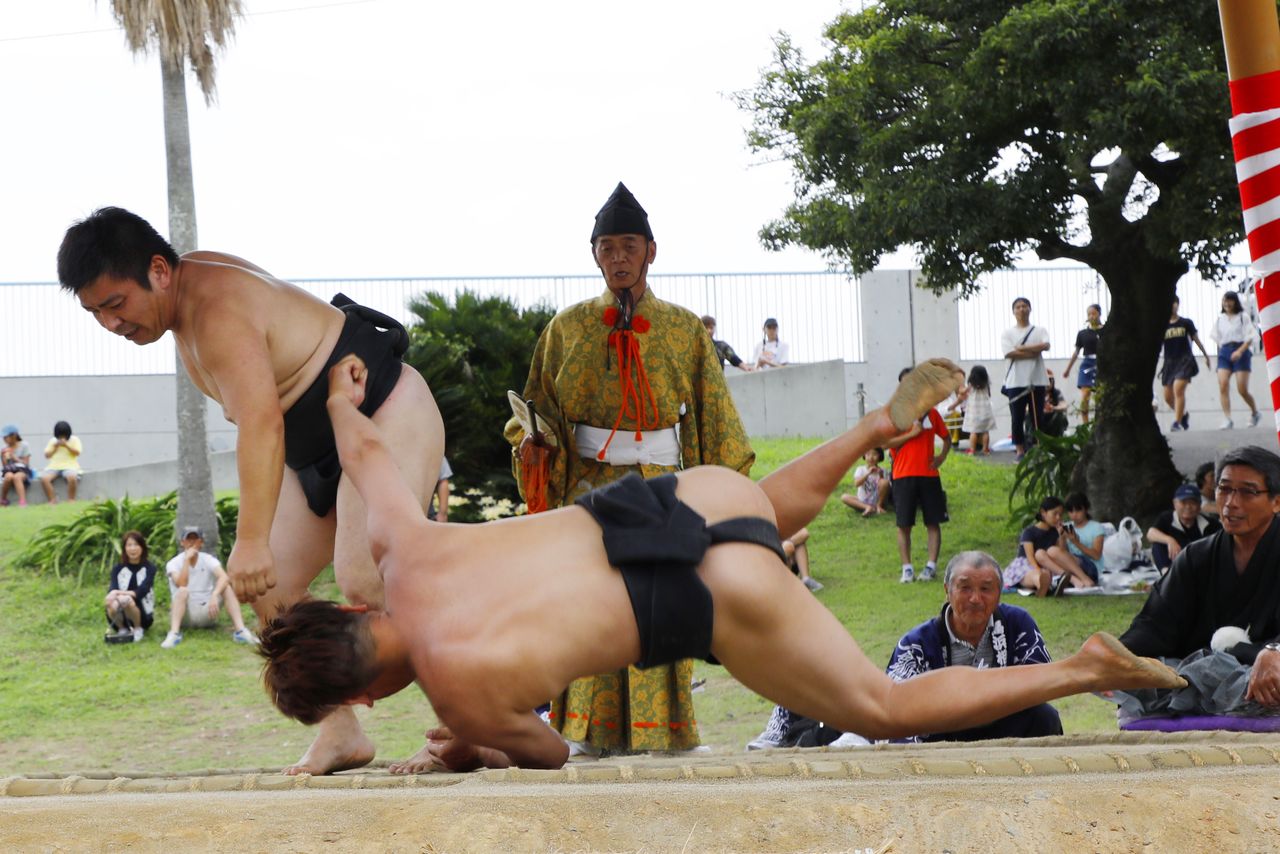
The top three ranks of east and west sides face off in warizumō. (© Haga Library)
Karatoyama Shinjizumō
(September 25, Hakui, Ishikawa Prefecture)
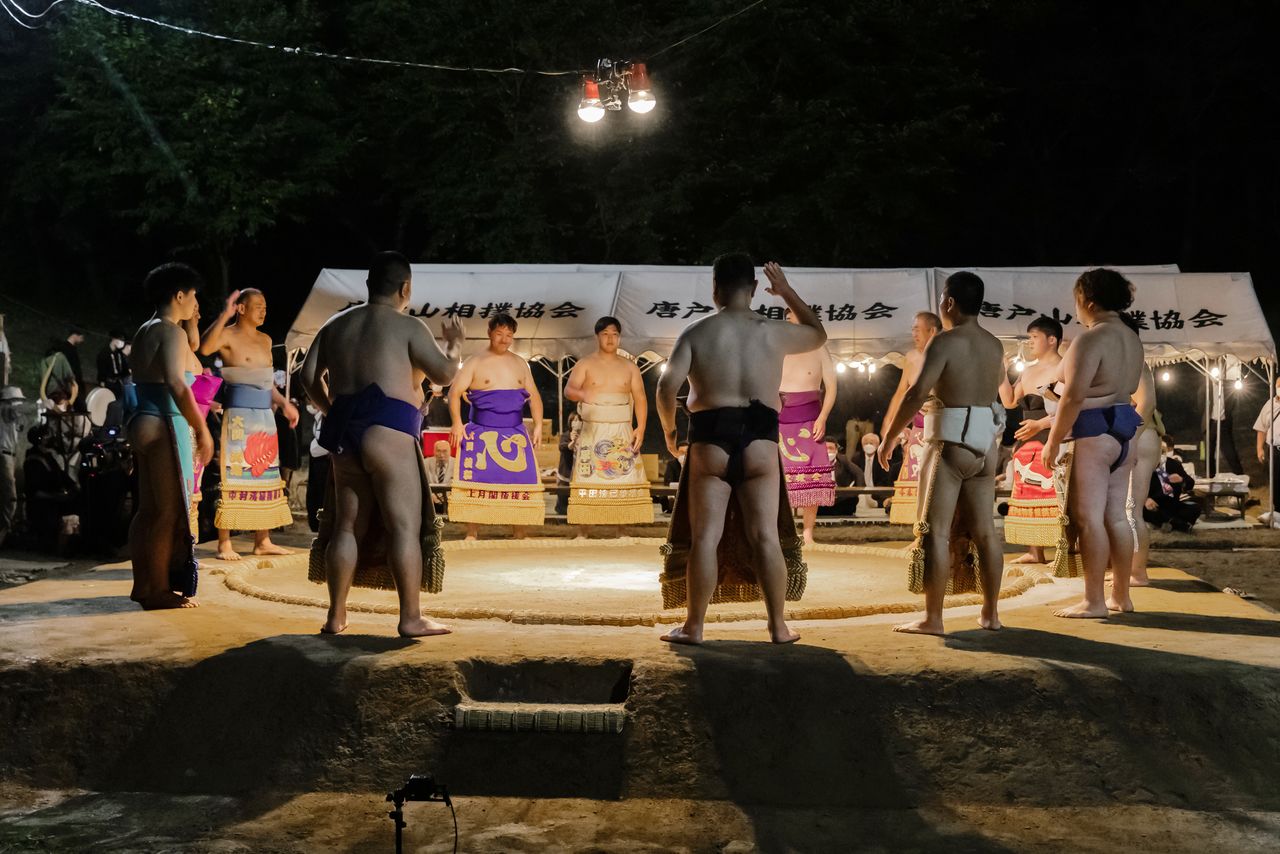
Wrestlers for the ritual matches enter the ring wearing decorated mawashi belts offered by sponsors and perform sumōjinku songs. (© Haga Library)
Hakui Shrine, at the base of the Noto Peninsula, is dedicated to Iwatsukuwake no Mikoto, a son of Emperor Suinin. He is said to have been a great lover of sumō, so every year this shrine hosts a ritual tournament on September 25, which has long been a chance for local wrestlers to gather and show off their strength.
The field of battle is the Karatoyama Sumōjō located about a kilometer to the south of the shrine. It is said to be Japan’s oldest outdoor sumō ring. This ritual sumō is famous for being run “without water, without salt, without breaks,” racing through around 50 matches at a rapid pace.
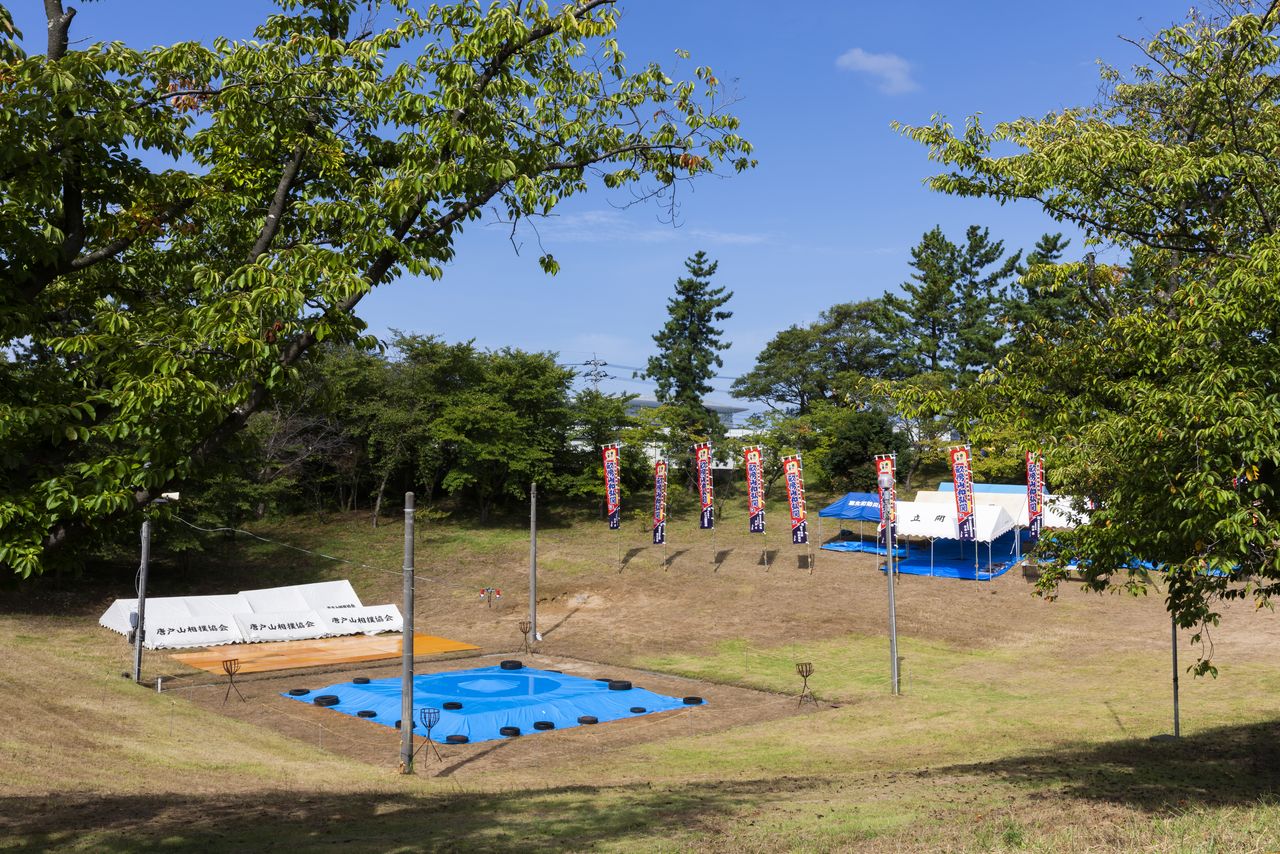
The ring is in a bowl-shaped hollow, with the surrounding slopes creating natural stadium-style ground seating. (© Haga Library)
The matches start from around five thirty in the afternoon with elementary school children in practice matches, while the tournament style kyōsanzumō starts from junior high-aged wrestlers. Around eight in the evening there is an intermission where a bonfire is lit, and the more earnest ritual matches begin. After ceremonial drumming and sumōjinku performances, matches go in order: maeyumi matches to decide who reaches the lowest named rank of komusubi; nakayumi to decide new sekiwake; and okuyumi to name new members to the highest ōzeki rank.
The wrestlers are not divided into east and west as in ōzumō, but by their birthplace. The city of Hakui is divided into sections around the central Ouchigata lagoon, with the Kamiyama region comprising Kaga and Etchū districts to the south, and the northern slopes of Noto known as Shimoyama. One ōzeki candidate comes from each section, Kamiyama and Shimoyama. The wrestlers are chosen a month in advance by a trainer who has served as ōzeki in the past, and he chooses based on wrestling skill, character, and contributions to the festival. Each wrestler is backed by a local association of over 100 supporters, who make extravagant keshōmawashi belts and offer enthusiastic support up to the match.
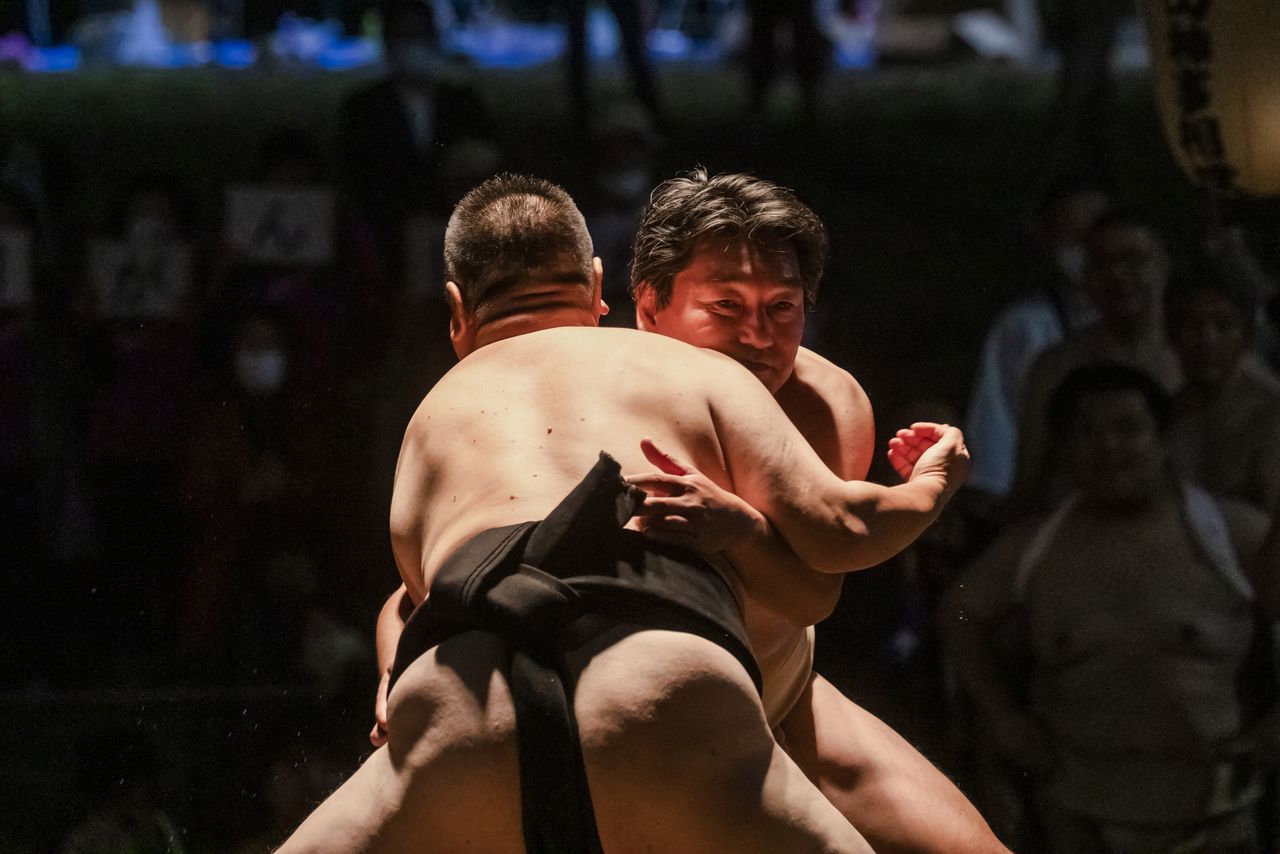
The okuyumi is an intense head-on battle. (© Haga Library)
When the komusubi and sekiwake bouts are settled, the bonfire is built up even higher, and it is time for the grand event: the ōzeki match. However, unlike at a normal bout, both wrestlers step into the ring at the same time. There is always a heated verbal argument, then after much deliberation over the wrestling, the match is proclaimed a draw, and two new ōzeki are born to much acclaim.
The two ōzeki’s teammates carry them from the ring to Hakui Shrine to report their victory. The next year they become head of the local sumō stables and so take charge of training younger wrestlers. This ensures that ritual sumō will continue to be passed down the same way from one year to the next.
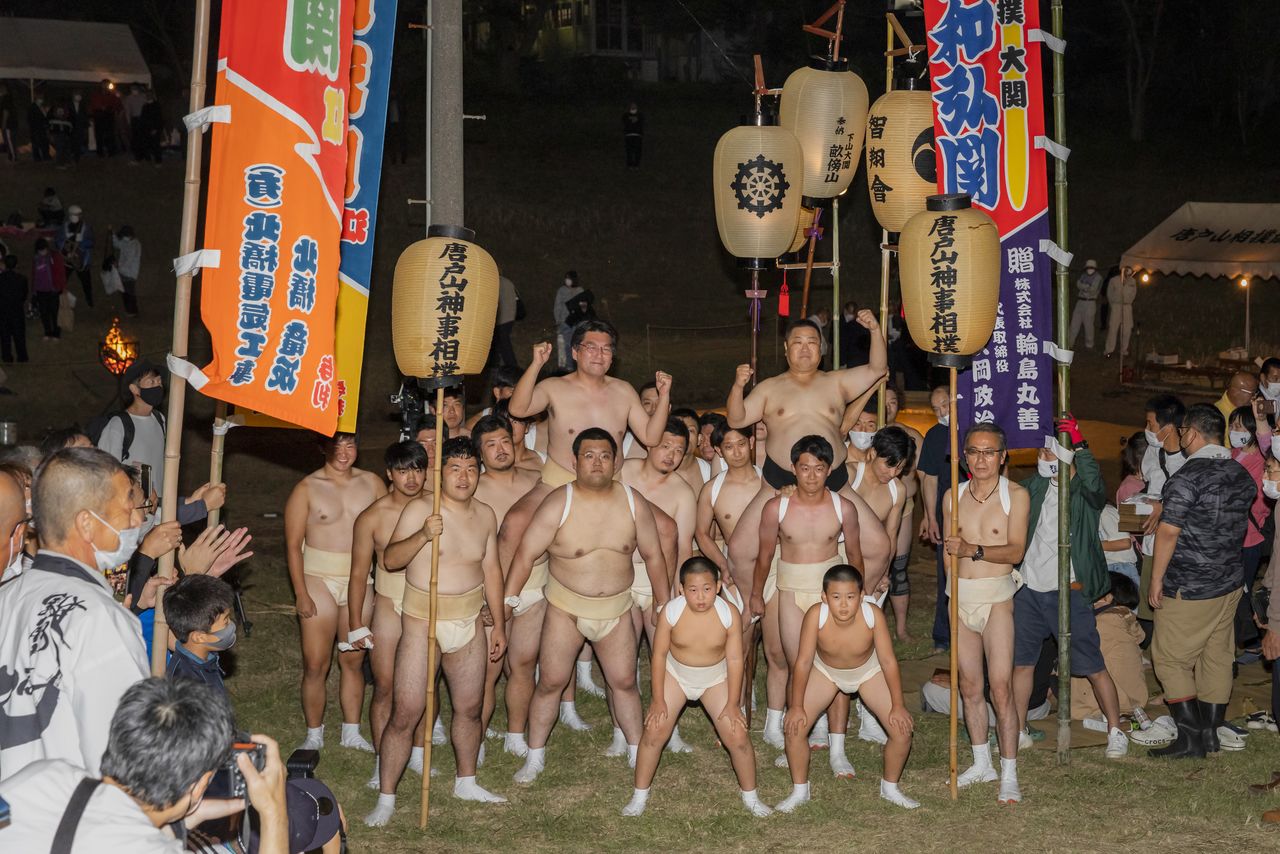
The two new ōzeki are lifted on their comrades’ shoulders and carried through the streets of the town. (© Haga Library)
(Originally published in Japanese. Dates given are those on which the festivals are usually held. Banner photo: A single wrestler, called ichirikizan, wrestles with an unseen opponent at Ōyamazumi Shrine in Imabari, Aichi Prefecture. © Haga Library.)